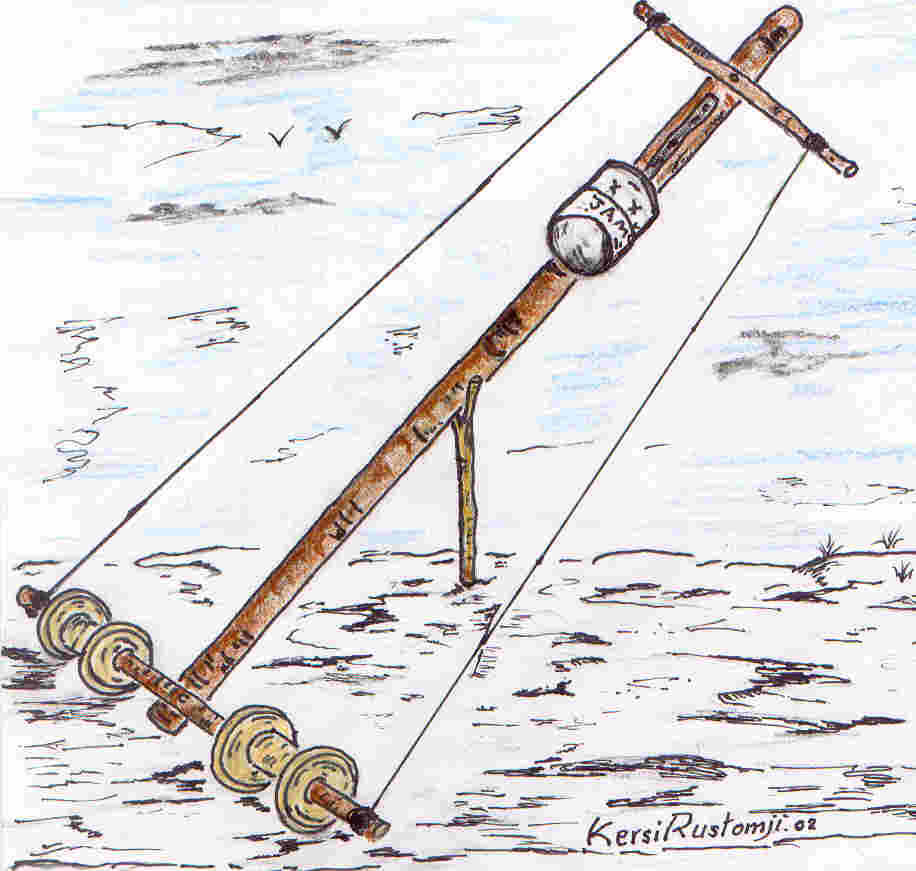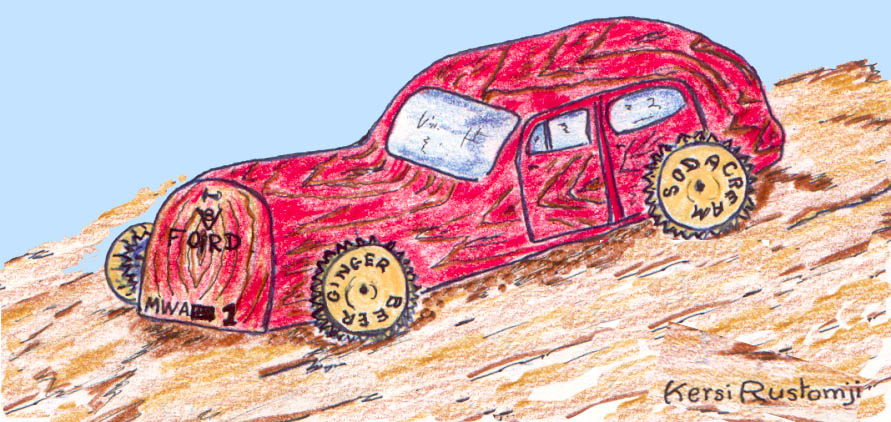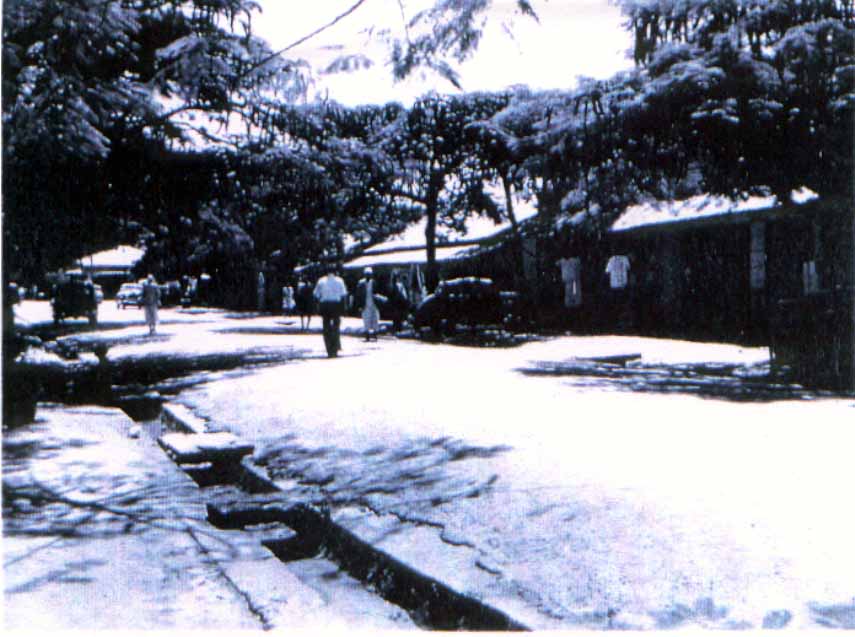5 Our Toys
There were very few of us who owned many ready-made toys. My only such toys were a paddle car and a tricycle. The paddle car was great fun as I tore around in it in our garden and on the roads skirting the house. It was a real thrill after a heavy shower to pelt through the puddles getting sprayed and splattered with mud. Driving over ramps made from wooden crate slats and sliding around corners, felt like an ace tearing along a racing track. As I got older stepping into the car was just not satisfactory enough. It had to have a door so I cut the panel with a hacksaw and converted it into a door.
The tricycle was great fun too as it was used for all the town chores and picking up small shopping for mum. One day as I tried to jump it over a gutter ramp, I caught the edge and flew head over heels onto the road. The impact on the front wheel snapped the main bar in two. It was quite a haul lugging the two parts of the tricycle to the town mechanic Kher Deen, to have it welded. “Oh badmash, yeh kesa kiya tumne, heh? Oh, you rogue, how did you manage to do this, heh?” He queried not believing the damage.
All the other toys we had were those we made ourselves. These were made from whatever materials we could find or scrounge from home, shops or town. A great deal of material came from the big town carpenter the Ram Singh and Sons, a Sikh family. They also had a timber yard adjoining the workshop so there was always a good amount of off-cuts to pick. The off-cuts were shaped into cars, trucks, or a train. Doors, windows and windscreens were drawn on and all were painted with whatever colour was available. Crown tops from drink bottles obtained from local shops made headlights and wheels, as did empty sewing cotton reels, which then were made from wood unlike the plastic ones today. The whole thing was pulled along with twine tied to a nail to the front end.
Absolutely anything was used for make believe toys. These included pieces of rail for a pretend bulldozer or long narrow biscuit tins with one end pressed into a bow and mast for boats and ships. Dhows, lake sailing ships, were hewed from logs of firewood and sometimes balanced with outriggers or they turned turtle.
The wooden cotton reels also made very good tanks. The rims of the reel were notched for better grip, for the tanks had to climb a certain slope to qualify. A stout rubber band cut from an old bicycle tube was threaded through the reel. At one end, a small wood pin held it in place while at the other end another stick or half a pencil was inserted in the loop. This was wound round, until the rubber band was quite twisted, and the tank released on the ground. As the rubber band unwound it pushed the tank along a chosen track with slopes and banks. The track had to be straight as the tanks could not negotiate corners and first across the line was the winner.
Cotton reels were also used to make a ngari, a Swahili word meaning a vehicle of any sort, derived from the Indian word gaadi. A simple ngari needed three cotton reels and two sticks. One stick was long enough to reach the ground when held at waist level. At the bottom end of this, a short stick was nailed across from under, to form an axle on which two reels were mounted and held in place with a thin nail at either end. The third reel was nailed loosely on the top just below the handgrip. A string from one end of the axle looped once round this reel and was attached firmly to the other end of the axle. This was the steering arrangement. Similarly a short stick was tied to the axle ends to also make a steering.
The driver pushed the ngari and put it through its paces making all engine, gearshift or horn and braking sounds. These ngaries too went everywhere with the owners whether it be on a chore, an errand or for a walk down the main street. It was not unusual to see a whole bunch of us racing our ngaries to school and back home.
Some ngaris also had a horn mounted on them. An old jam or other tin was tied onto the long stick below the steering reel. At the open end, which pointed down, a nail held down a rubber band cut from an old bicycle inner tube. The rubber band tautly threaded through a hole in the bottom of the tin, was attached with a string to a nail below the steering reel. When pulled the string stretched the rubber band and vibrated the tin to make a loud shrilly sound. It made many unwary pedestrians jump to the delight of the drivers.
 |
Cotton reel ngari with a jam tin horn, which
made many unsuspecting folks jump |
A somewhat more sophisticated ngari was a car or a truck fashioned from fire wood with crown bottle tops for wheels. It was painted either blue or red as these were the only two inks we could get from school. The car was made to look as close as one’s favourite model. The towing string was attached to a nail in the front.This toy making resulted in a number of irate dads as, pliers, hammers, screwdrivers and other tools disappeared, sometimes found on the neighbour’s verandas.
 |
A Ford V 8 made from firewood |
